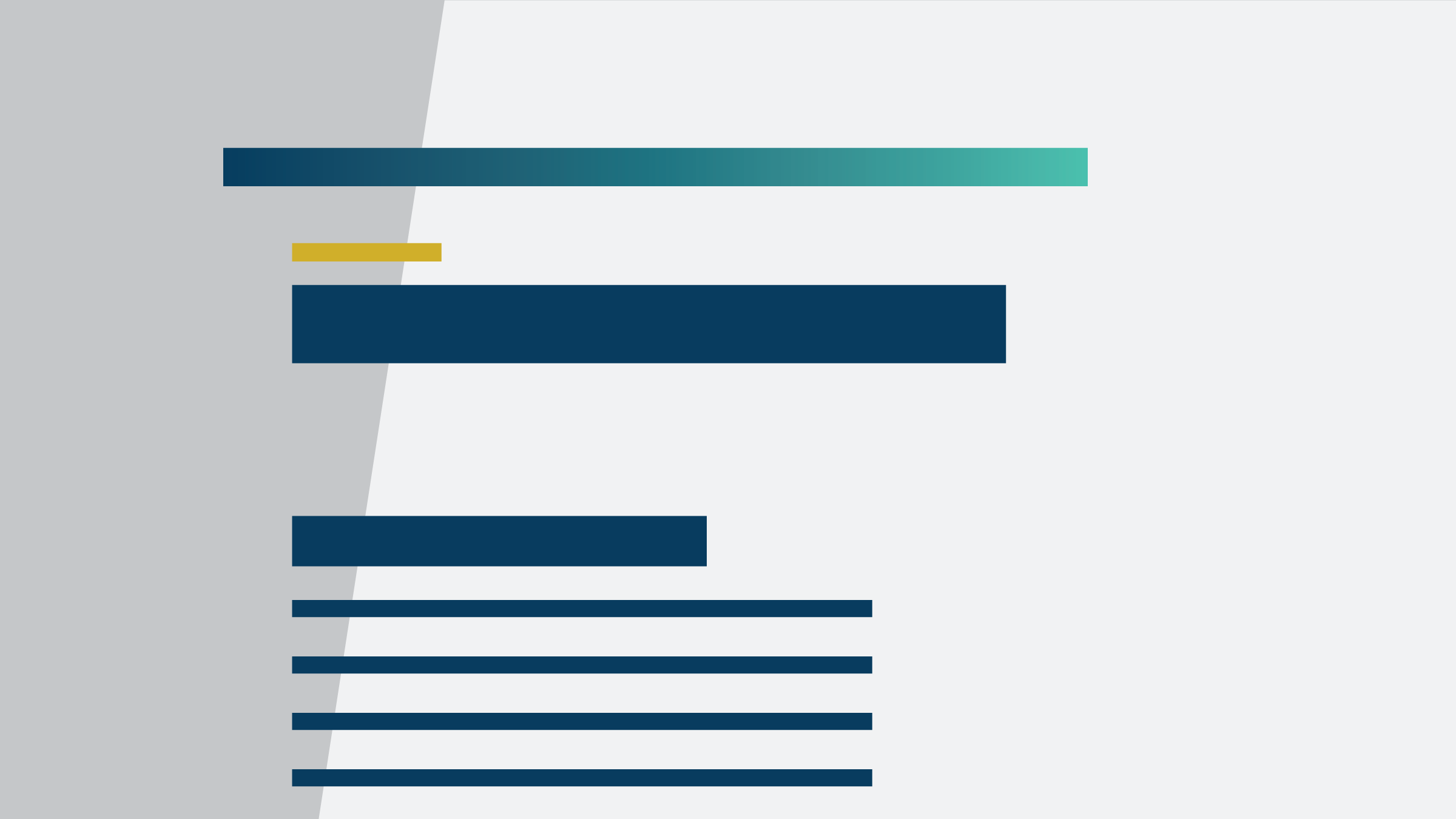The gestation period of an economics paper is typically a matter of months—maybe years. The turnaround for “On Wars, Sanctions and Sovereign Default,” a new Minneapolis Fed working paper, was about six days.
“We essentially had a conversation over coffee on a Monday, emailed Monday night, talked Tuesday, and by Sunday we had the paper out,” said Minneapolis Fed Consultant César Sosa-Padilla, also of the University of Notre Dame. The collaboration moved quickly, keeping pace with the headlines: The paper considers when a lender country like the U.S. would rationally force a borrower country like Russia to default on the debt. “We wanted to see whether we could write down a sensible economic model to look at when it would make sense to impose these sanctions.”
“As an applied theorist, I always get motivation from policy and world events,” said Minneapolis Fed Senior Research Economist Javier Bianchi. “In this case, César and I already had some work on international reserves, and our thinking was basically: How can we use the model we developed and adapt it to think about what’s going on? This was certainly the fastest paper we ever wrote.”
How did you adapt your existing sovereign debt model to reflect the Russian situation?
Javier Bianchi: In the typical model, the borrowing country accumulates foreign currency reserves internationally and it is completely free to access them. If the country has some liquidity needs, it would bring those reserves back from overseas and use them to pay back the debt or to make other domestic expenditures. But now, we have a situation where the international community can put restrictions on the ability to access those reserves. In general, the international community would never put restrictions on the use of reserves, preventing the debtor from paying back the debt. But this is the situation we have now. So, that was the first modification. The second was to allow for a “geopolitical externality” to capture the degree to which the creditor country wants to see a reduction in the resources available to the debtor country.
What ultimately tips the creditor country over into squeezing so hard that it causes a default?
César Sosa-Padilla: What our theory says is that the strength of the geopolitical externality is what makes this difference. We find that when it’s not so important for the creditor country to reduce the resources of the debtor country—the optimal thing to do is to impose restrictions but not trigger a default. However, if the externality is larger, the optimal thing to do is to impose further restrictions that will trigger a default.
How does the model help us understand the evolution of the financial sanctions during the war?
CSP: One has to be careful with the parallels between the real world and the model, but you could think that maybe after the public information or display about violations of human rights, this geopolitical-externality parameter in the model moved. Things that seemed too costly initially now seem less costly because the creditor has seen what’s happening on the other side.
JB: At the beginning there was clearly a war that was against international law, and the response was to restrict Russian resources—but not go so far as to trigger a default. Then, as the international community found out all the gross violations of human rights, evidence of genocide, that’s when many of the sanctions were made more stringent, ultimately exposing the West to the losses from a sovereign default. You care more about hurting Russia than hurting yourself.
Weighing full or partial default
Russia was heading down the road of partial or “selective” default: They announced they were going to make two major bond payments in rubles, violating the terms. Then at the 11th hour, they paid in dollars and euros after all. How do you understand the Russian actions we have seen so far?
JB: It tells us that they are really trying to avoid a default. They see there are some substantial costs, and they’re now willing to tap resources that they have elsewhere. And that was part of the idea by the U.S., that even if the sanctions do not lead to default by Russia, the restrictions are still useful because the restrictions tighten the resources available to Russia. It is a question whether, in the next few months, Russia will be able and willing to make the payments or whether they will end up defaulting.
Credit default swap markets give us some sort of signal here, and they seem to be saying that investors still consider a default to be quite likely. What do you think?
CSP: Yes, and that’s perfectly in line with our theory. Even if right now the default was avoided, it’s clear that making these payments is costly for Russia. And so the markets anticipate that the sanctions are going to stay, making these payments more and more costly.
If you’re Russia, why not default at this point?
CSP: A big part of their decision is driven by concerns about the future, about reputational costs that might remain even after the conflict is over.
JB: Russia’s reputation as a country that respects international law is obviously on the floor. But their reputation as a payer of debt can still be saved if they pay the bonds.
CSP: After wars, countries typically default. These are very dire times, and defaults are understandable in a sense. They are probably trying to make this effort so later they can say, “Oh, we are so reliable on the credit markets that even during the war, we made payments.” Now that’s a bit cynical because the war is of their making!
Does a selective default have fundamentally different ramifications for Russia than just defaulting altogether?
JB: When ratings agencies declare a default, it’s almost binary: It’s a default. In the data, the countries that do more of a partial default end up having better access to credit markets in the future. But that fact per se is difficult, because those who do more of an outright default are countries that have a bigger crisis to begin with.
CSP: In the end, almost all defaults are really partial defaults. They all go through some renegotiation and creditors get something. If Russia is pulled into selective default, they won’t avoid the consequences.
Would you expect the Russian experience will be a powerful motivator for other countries in deciding whether they want to park a substantial portion of their reserves with the U.S. or other Western countries?
JB: Definitely. Countries that have more antagonism with the U.S. will have an incentive to park their reserves with someone else. There is a discussion about whether the assets might move toward other currencies—that is a separate discussion. Such countries might choose to have dollar assets in, say, Switzerland instead of the United States. I don’t think there’s a reason why now there would be a portfolio away from dollars, but there will be a switch away from the U.S.
It’s not clear where those havens are. Even Switzerland joined in the financial sanctions.
CSP: That’s a good point. And if everyone has a sanction, then you just park it where it is safer. But probably everyone is not going to punish countries in the same way or at the same time. I think there definitely is some scope there for strategically choosing where to put your reserves.
JB: Some banking systems don’t accept dollar deposits. But there is a dollar market, for sure, away from the United States. There are also triangular relationships: Yes, maybe Russia puts dollars in India, for example, but Indian banks end up parking the money in the U.S. And so indirectly the U.S. still has those inflows.
The state of “Fortress Russia”
We’re more than two months after the invasion. What’s your overall sense of how well Fortress Russia—Vladimir Putin’s ambition to insulate the country’s economy—is holding up?
JB: As soon as the West put the sanctions in place, there was a collapse in the stock market and the price of the ruble. Then after a few weeks, the ruble started going up. There has been some interesting recent work discussing how some of the sanctions do not necessarily lead to a depreciation of the ruble, because basically once you stop Russia from importing, Russia has less need of foreign currency. Many of the sanctions have hurt Russia even though that has not been reflected in a weaker ruble. Russian GDP is expected to contract significantly. They have many policies for containing capital flight; they are blocking withdrawals in dollars and imposing capital controls on outflows. I don’t know how transparent they are in terms of their economic numbers, but things are somewhat holding steady—it is not a complete collapse of the economy.
CSP: Russia thought [the invasion] was going to go way faster and be way smoother for them. They were not prepared for the military opposition in Ukraine and the severity of the sanctions. What happened with the reserves is a clear example that they were not prepared. At the same time, I agree: This is not a complete meltdown of the economy, from what we know.
The stabilization of the ruble suggests that they are not dealing yet with runaway inflation.
CSP: What matters here is the unofficial market—the black-market price of the ruble. We have reports that it is something like double the [official] exchange rate, a much more pronounced depreciation. It is still true, even at that price, that it hasn’t completely collapsed and has sort of stabilized.
JB: It looks like inflation hasn’t skyrocketed. It has gone up, but it is under control.
One big development as we are talking today is that Germany and other European countries appear to be moving with real determination toward cutting themselves off from Russian energy. How would this energy-move affect the current balance?
CSP: I think it would be huge for the efforts to win the war. Everyone’s understanding is that [Russian energy] is the main source of financing for the war. If [a cutoff] were to happen, it is good news for the West, although it is definitely costly for Germany and others. In terms of our theory here, that is equivalent to a sharp decline in the income of the debtor country, and that would make a default even more likely.
JB: It’s going to be effective, but we still don’t know if it’s going to be a game-changer. I have some doubts. It’s not only a matter of whether Russia can export oil to Europe. They’re going to find other markets. The oil embargo is a good policy, but you also want to reduce total demand for oil—or anything that Russia exports—and increase the production. That’s going to bring down oil prices, so even if Russia is able to find some markets, it’s going to end up exporting at lower prices. This could increase the political consensus around a carbon tax, now that it has the additional geopolitical benefit of weakening Russia.
When Javier and I talked earlier in the year, we discussed the Russian stock market as an important signal. Meanwhile the Moscow stock exchange closed for a month, then reopened—but with restrictions on foreigners selling Russian stocks. Russian stock indexes are down about one-third since just before the invasion. What is the stock market telling us today?
CSP: It’s an awakening to the fact that Russia is a more uncertain place than we thought it was, and investors are moving away from it. It’s telling us that the expectations of Russian growth are lower. Even when the military intervention is over, it’s going to have an effect—not only in the market relations of Russia with the rest of the world, but within the Russian economy.
The real signal might be even more pessimistic without the guardrails on the market.
JB: Right, because there are many foreigners who would sell without those restrictions. So these measures are inflating the stock market and prices would be much lower in the absence of those restrictions. And stocks are showing us a market price. The Russian government might be able to manipulate inflation statistics or GDP statistics, but the price of the stock market is somewhat transparent—we know what the price of the trades look like, even if they do have certain restrictions on trading that keep it from falling even further.
Economics and emotions
It’s reasonable to look at the decision-making in this situation and say you can’t reduce it to math. Putin is not necessarily sitting back and running the numbers. Both sides are responding to their domestic political audiences. People are acting on gut. You’re economists, and you’re doing what economists do: developing a rigorous set of equations and mathematical conditions. How do you square that with the fact that the world out there is also governed so heavily by emotion?
JB: My view is that precisely because the world is so complicated, it is useful to have simple models that can help us understand some of the forces and events we are seeing in the real world. The emotions of policymakers are certainly part of the decision-making. But many of these decisions are also rationalizable in terms of objectives that are being pursued with their actions, and these are things that economists know how to model because policies have trade-offs—benefits and costs. We develop a framework to formalize these trade-offs and potentially quantify them to find out what is more important.
CSP: I agree with that. One thing I would want to add is that all these other things, you could interpret them as added uncertainty. And our models are perfectly able to handle those. A big part of economic models in general is uncertainty and unexpected events. Certain parts of the profession have become very specialized in incorporating policy mistakes, new information that comes up, or behavioral issues. The fact that policymakers might, from some perspective, look like they are behaving irrationally is not a restriction for the theory. These are things that we can incorporate. The paper we circulated is simple enough that some of these things are assumed away for now, but they can be part of the theory if needed.
Jeff Horwich is the senior economics writer for the Minneapolis Fed. He has been an economic journalist with public radio, commissioned examiner for the Consumer Financial Protection Bureau, and director of policy and communications for the Minneapolis Public Housing Authority. He received his master’s degree in applied economics from the University of Minnesota.








